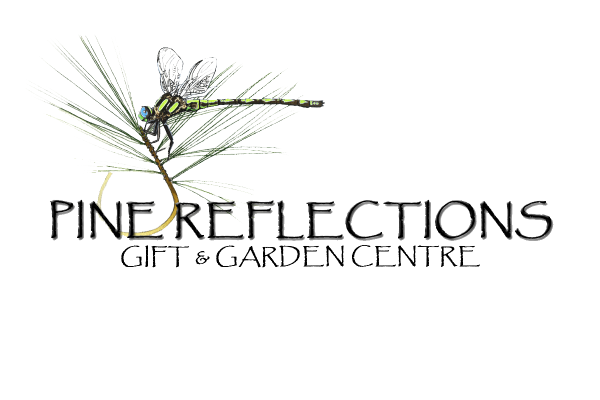Gardening Tips
If you re a beginning gardener, please don't hesitate to contact us with any questions you may have or check out our most frequently asked questions below. Our staff are more than happy to help you get a flower pot or garden started. We provide advice on custom garden design and planting. We love getting people excited about creating their own garden spaces! You can even drop off a pot, and we'll create a beautiful, customized hanging basket arrangement for you.
Q1. What plants do well in this area?
A. Because we only bring in plants that are zoned specifically for this area you can rest assured that whatever plants you select at Pine Reflections should be compatible with your garden at home. We enjoy teaching our customers about how to take care of their plants so they can have a healthy, beautiful garden.
Q2. How often do I need to water my plants?
A. To determine how often you will need to water your plants you must first determine the location of your plants and how much sunlight they will receive. Other factors to take into consideration is the type of soil, the time of the year and the plant species. Specific water requirements will vary from plant to plant
Q3. How much topsoil should I buy for my new flower bed?
A. Topsoil Is the uppermost layer of soil that is high in nutrients and organic matter. Available in premium, general-purpose and economy grades, topsoil can be purchased in bags or in bulk from a garden centre such as Pine Reflections Gift Store & Garden Centre. Topsoil can be used for new flower beds , borders, raised beds or even as a base for your lawn. For a new bed, you 'll need 20cm (8in) or more topsoil, while you'll typically need at least a 10cm (4in) layer of topsoil for an existing bed.
Q4. How do I know if I need clay or sandy soil for my plants?
A. Clay soil is rich in nutrients and can accommodate a variety of plants, including Mahonia Japonica, Hydrangea, Sorbus Aria (lutescens), Hardy geraniums and Viburnum x Bodnantense (dawn). Be aware that clay soils can be as thick as concrete in the summer and a sticky mess in the winter without any intervention. However, if you improve their texture, you'll enjoy strong plant growth as your reward. While sandy soils are much easier to cultivate and work with, they do tend to dry out quickly and are lower In nutrients. If you do choose to garden with a sandy soil, be sure you select plants that can thrive in dry, infertile soils. Otherwise, you 'll have to rely on heavy watering and feeding to make your plants grow. The top five plants for sandy soils include Lavandula (lavender) , Geranium Rozanne (Gerwat) RHS AGM, Buddleja, Verbena Bonariensis and Choisya Ternata AGM (Mexican orange blossoms).
Q5. What type of aggregate should I use, and about how much do aggregates weigh?
A. Comprised of sand, gravel and stone aggregates are used for a variety of purposes If you need filler or compaction material for a sturdy base, pit run, A-gravel , crushed limestone and sand are recommended. If you need aggregate for your driveway, you should try A-gravel, clear stone or crushed limestone. For decorative or playground areas , you can't go wrong with play sand, pea stone or river stone. Clear stone is primarily used for filler requiring drainage. Aggregates can weigh between 800kg and 1,300kg per cubic yard, depending upon the material type and its moisture level. Most standard pickup trucks are rated for 500 kg . Limestone screenings are also essential under patio stones.
Q 6. What are the differences between different types of mulch?
A. Mulches come in a variety of wood types including cedar, pine or hemlock wood. If you need mulch that's easy to remove the following season, cedar may be your best bet. It stays in place well and doesn't decompose. It also has a distinctive aroma. If you want to go for a slightly more rugged look, choose pine mulch. Pine mulch turns dark with age and suppresses weeds better than cedar mulch. Because hemlock wood mulch will decompose in a few seasons, it will add organic matter to your garden that you don't have to worry about removing. All of the various kinds of mulch will last as long as you still find them visually appealing. If you "fluff ' your mulch every few months , you can achieve a fresh, moist look again. Because cedar mulch does not decompose, it will turn grey with age. Pine mulch decomposes slowly and will turn a dark brown colour with age. Hemlock wood mulch decomposes slowly and will turn to a light gold colour with age. A regular pick-up truck with a 6-foot box should hold up to a yard of light mulch.
